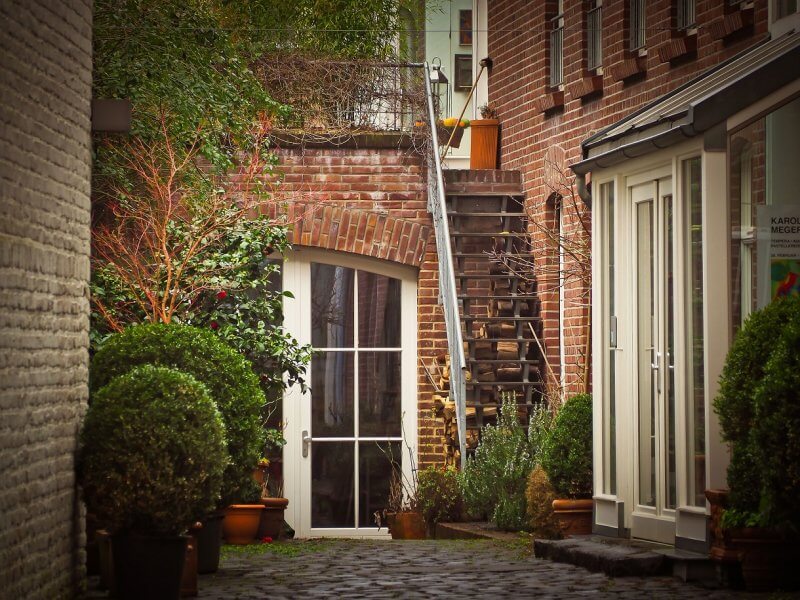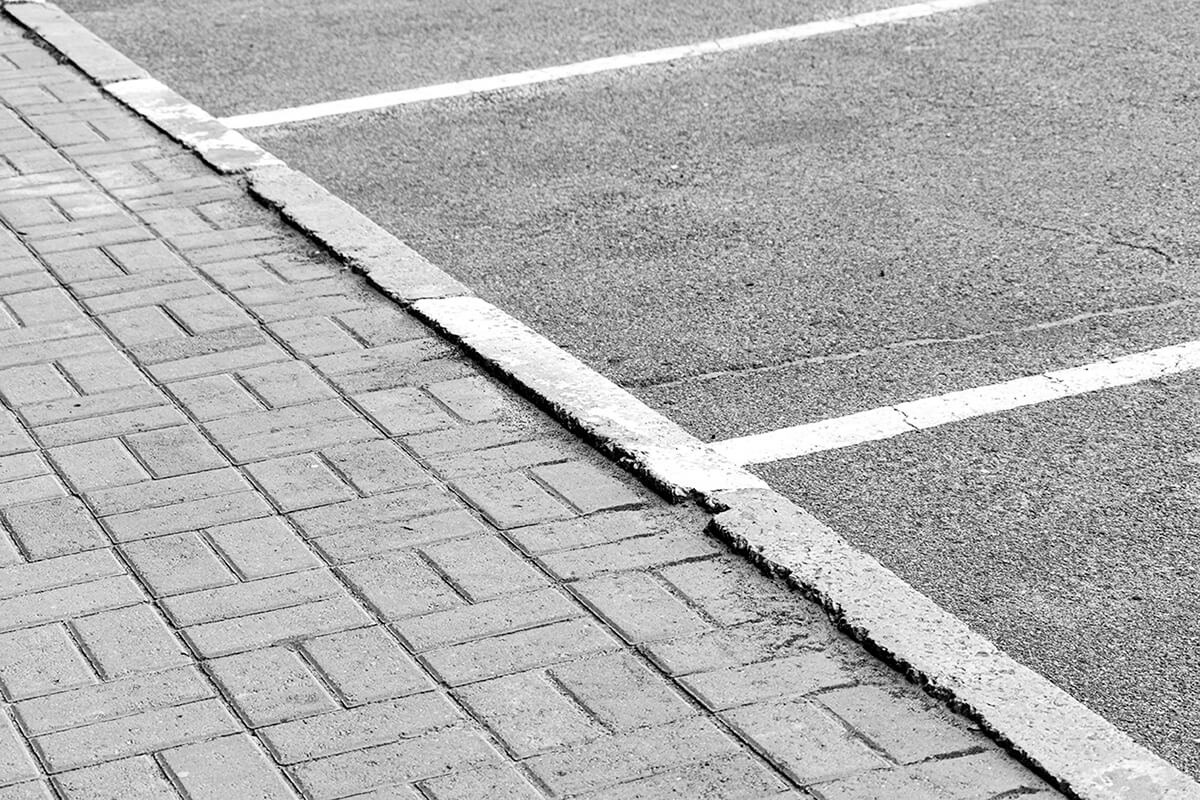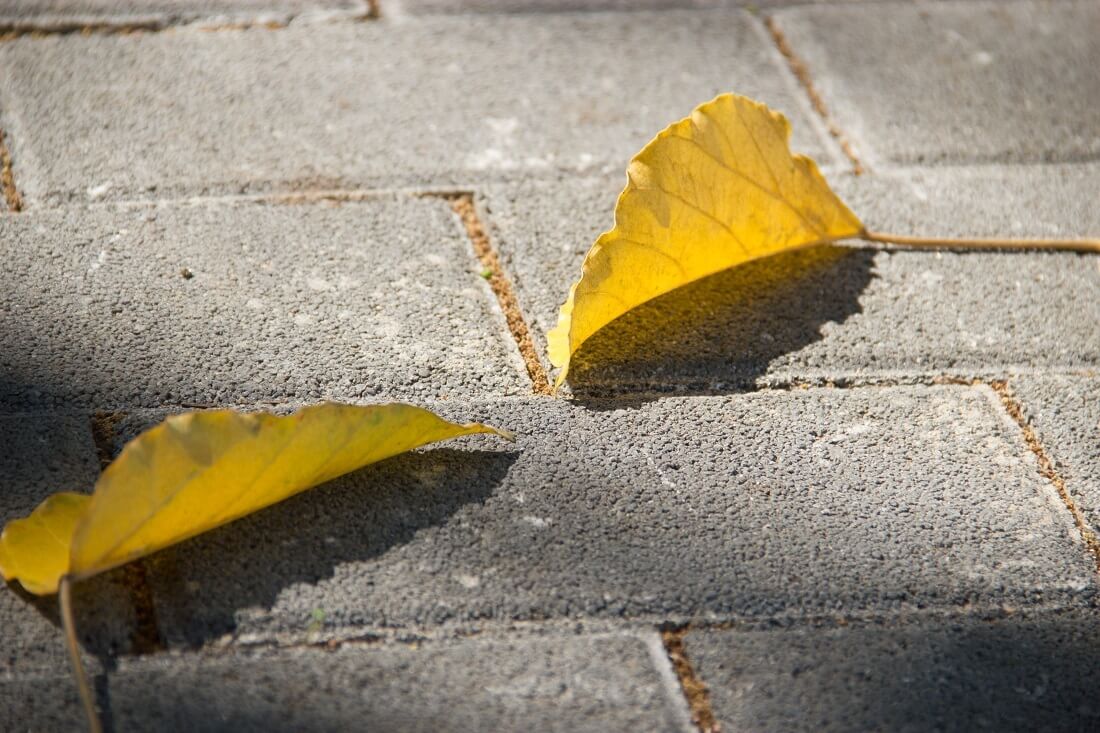How to Clean Interlock Stone & Other Spring Maintenance Tips
When cold weather finally gives way to warmer days, it’s time for that seasonal favourite—spring cleaning. Like other exterior fixtures for your home, interlocking stone driveways, patios, and walkways shouldn’t be overlooked during the spring-cleaning frenzy.
Consider this: your interlocking stone has been buried in snow and ice for the last few months. During this time, it has likely experienced some wear and tear, especially during the freeze-thaw cycle of Ottawa’s harsh winter. However, if you’ve sealed your interlocking stone within the last few years, you’re likely in much better shape.
Once the snow and ice have melted, spend some time caring for your interlocking stones to get them ready for patio season and to boost your home’s curb appeal.
Cleaning Interlocking Pavers
Cleaning
Follow these steps to thoroughly clean your interlocking pavers:
- Use a garden hose or pressure washer to clean the pavers.
- Mix household detergent and water in a bucket until very sudsy, then pour on your pavers and allow to sit for 20 minutes.
- Use a scrubbing brush or broom to scrub your pavers.
- Rinse off with a hose.
- Use a paver cleaning product, such as Techniseal, to remove stubborn stains, such as oil, grease, rust, paint, tar, dirt, and rubber.
Weeding
While you might be thrilled to see that some plants survived the winter, weeds in your pavers aren’t one of them.
This issue is more common for those who had their interlocking stone installed 10-15 years ago. Most landscaping companies today will use polymeric sand as it prevents weeds, grass, and other foliage from growing in between the stones.
If you’ve noticed some growth around your stones, there are several methods to remove pesky weeds from between interlocking stone pavers:
- Use an L-shaped interlock weeding tool to remove weeds by hand;
- Use horticultural vinegar to kill weeds with acidity and dehydration during dry weather. This vinegar is twice the concentration of household vinegar;
- For problematic algae, moss, or lichen growth, you can use herbicide weed killers. Trim or scrape thick growth before applying the solution;
- Use a pressure washer to clean off growths and force weeds out of cracks and crevices; or,
- Hire a professional landscaper to do thermal weeding with a propane torch weeder.
How to Stop Weeds from Growing Between Pavers
If your stone pavers are dated or were not installed properly, there are things you can do to prevent issues from occurring in the future.
When appropriately applied, the rock-hard surface of polymeric sand can prevent weeds, moss, and algae from growing between pavers for three to five years. The outdoor elements and use of the interlocking pavers will break down the polymers in the sand over time. So it’s important to properly install high-quality polymeric sand to ensure you get the most out of your installation.
Proper installation of polymeric sand involves compacting the sand for a tightly compacted joint that will last longer. Once you carefully sweep the sand into the cracks, use a leaf blower to help you clear sand off your pavers.
Then use a compactor with a thin piece of plywood or a piece of carpet underneath to protect the pavers while compacting the sand. The weight and vibration from the compactor will remove air pockets and small voids within the joints that would otherwise weaken the joints and lead to cracking.
Apply a fine spray or mist of water to the sand until the water just starts to pool on top of the joints. Depending on the depth and size of the joints, you may wish to repeat this a few times after the water is absorbed into the joints.
Keep in mind that using too much water will wash away the sand, while too little water won’t form a tight bond in the joints. Also, avoid doing this work if rain is in the weather forecast. Rain will splatter the fresh sand all over the pavers, and the polymers will end up bonding to your pavers, becoming difficult to remove. So this job should only be done during a period of sunny days.
If rain does end up in the forecast, cover your pavers with a plastic sheet or tarp to avoid a mess.
Equipment You’ll Need
To thoroughly clean and maintain your interlocking pavers, gather the following cleaning and maintenance supplies:
- Garden hose or pressure washer
- Household detergent
- Water and bucket
- Scrubbing brush
- Large broom
- Paver cleaner
- Sealer
- Sand (preferably polymeric sand)
- Application brush or roller
Do You Need a Power Washer?
While a garden hose with a spray can help clean your pavers, a power washer will remove all the stubborn grime and embedded dirt from your pavers that a hose cannot remove.
If using a pressure washer, use hot water and a fan spray if possible to prevent damaging the surface of the stones.
After weeding and using a pressure washer, you will have to replace any sand that has been lost between the pavers.
However, if you have sealed your stone pavers, you can likely skip this process altogether!
Replacing Sand Between Pavers
You can replace the sand between your pavers using regular landscaping sand or polymeric sand. Although regular sand is cost-effective, it does not develop a hard surface like polymeric sand, so it won’t prevent weeds from growing between your pavers. Nor will it prevent ants from burrowing into the cracks between your pavers.
Stormwater also quickly washes away regular sand, so you’ll need to replace it every year. You’ll also need to keep sweeping sand off your pavers.
For a better appearance, a hard surface that prevents weeds and ant burrowing, and to avoid tracking sand over your pavers and into your home, opt for polymeric sand instead.
Polymeric sand is a combination of fine sand and polymer (a binder compound) used specifically for filling joints between bricks, pavers, and natural stones in hardscaping projects such as for driveways, walkways, and patios.
When replacing sand between your interlocking pavers or patio stones, only do so after you have power washed your pavers and they are completely dry.
Once you have carefully swept and compacted the sand between the cracks, you can spray the interlocking paving stones with water. The polymeric sand will absorb the water and harden between the cracks, holding the pavers in place while preventing weed growth and pests from burrowing and nesting under your paving stones.
Maintaining Patio Edges
The long winter can take its toll on patios, dislodging the plastic or metal edging and causing the pavers around the edges to shift out of place. If you notice this shifting has occurred, you can fix the edges by:
- Removing the edge pavers;
- Realigning the edging;
- Replacing the pavers while adding a bit of sand underneath for an even surface; and,
- Sweeping polymeric sand into the joints.
Sealing Interlocking Stone
During a period of dry, sunny days and after cleaning your interlocking stone, apply coats of sealer. The sealer should dry for at least 36 hours before getting wet.
The sealer will protect your interlocking stone from damage and stains while maintaining their colours and making the stones easier to clean in the future. You should also reseal your pavers every two to three years.
There is a variety of sealers available for interlocking stone which will give you the look you’re going for while also serving other uses. These options include:
- Boosted colour;
- Clear;
- Natural look;
- Semi-gloss;
- 100% acrylic lacquer for a high-gloss finish and wet look;
- Silane or Siloxane to repel water; and,
- Sodium or lithium silicate densifier to strengthen the pavers.
Use a paint roller or brush to apply the sealer, evenly spreading excess sealer across your pavers. Allow the sealer to dry according to the manufacturer’s instructions, and apply a second coat once the first coat has completely dried.
With a bit of time and care during a beautiful, sunny spring day, you can make your interlocking stones new again after a long, brutal winter. Get started so you can start enjoying the look of your clean pavers in time for the gorgeous weather to come!






